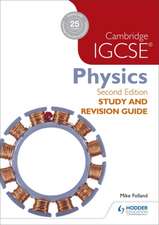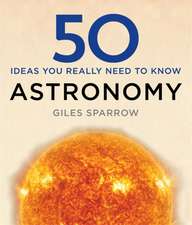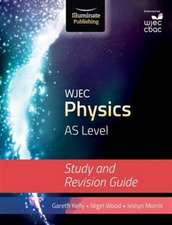Morphological Astronomy
Autor Fritz Zwickyen Limba Engleză Paperback – iun 2012
Preț: 944.19 lei
Preț vechi: 1151.45 lei
-18% Nou
Puncte Express: 1416
Preț estimativ în valută:
180.67€ • 188.63$ • 149.53£
180.67€ • 188.63$ • 149.53£
Carte tipărită la comandă
Livrare economică 04-18 aprilie
Preluare comenzi: 021 569.72.76
Specificații
ISBN-13: 9783642875465
ISBN-10: 3642875467
Pagini: 304
Ilustrații: IV, 299 p.
Dimensiuni: 152 x 229 x 16 mm
Greutate: 0.41 kg
Ediția:Softcover reprint of the original 1st ed. 1957
Editura: Springer Berlin, Heidelberg
Colecția Springer
Locul publicării:Berlin, Heidelberg, Germany
ISBN-10: 3642875467
Pagini: 304
Ilustrații: IV, 299 p.
Dimensiuni: 152 x 229 x 16 mm
Greutate: 0.41 kg
Ediția:Softcover reprint of the original 1st ed. 1957
Editura: Springer Berlin, Heidelberg
Colecția Springer
Locul publicării:Berlin, Heidelberg, Germany
Public țintă
ResearchDescriere
Man has a great tendency to get lost or to hide, as the case may be, in a jungle of details and in unnecessary complications. Why do anything simply if you can do it complicated? And still, life itself presents a sufficient number of problems to keep us busy. There would seem to be no need to create additional difficulties, just for the fun of it, especially if these self-made difficulties become practically insuperable and if in the end they cause much unhappiness. The morphological mode of thought and of action was conceived to break the vicious hold which the parasitic wild growth of complications exerts on life in all of its phases. Morphological thought and action are likely to be of value in all human activities, once such thought and action have been clearly delineated and fully developed, and once they have been practised by a sufficiently large number of people. Since the morphological method is of the greatest universality, the choice of the field to which one applies it first is not particulary critical. The author intends to write two or three books on the morphology of several large scale problems, which are both of a technical and of a general social nature. The present book is concerned in particular with some implications of morphological thinking in astronomy. We shall above all emphasize the basic character of the morphological approach, and we shall demonstrate its constructive power in a number of specific cases.
Cuprins
I: Morphological Research and Invention.- 1. Introductory Remarks.- 2. Random Intuition and Systematized Discovery, Research and Invention. Communicable Truth and Incommunicable Truth.- 3. The Formalism of Communicable Truth.- 4. The Method of Negation and Subsequent Construction.- 5. The Morphological Method of Analysis and Construction.- 6. Past Applications of the Morphological Method.- 7. Deficiencies which Aid the Morphological Method.- 8. The Record of the 18-inch Schmidt Telescope on Palomar Mountain.- 9. Specific Plans for a Morphological Approach to Astronomy.- II: Clouds and Clusters of Galaxies.- 10. The Known and the Unknown.- 11. The Large Scale Distribution of Matter in the Universe.- 12. The Coma Cluster of Galaxies.- 13. Excursion into the Theory of Probabilities.- 14. Continuation of the Discussion on the Coma Cluster.- 15. The Cancer Cluster of Galaxies.- 16. The Pegasus Cluster of Galaxies.- 17. Review of the Observations on the Clusters of Galaxies in Coma, Cancer and Pegasus.- 18. Irregular Clusters of Galaxies.- 19. Isopleths of Nebular Distribution.- III: The Large Scale Distribution of Galaxies and of Clusters of Galaxies.- 20. Past and Present Views.- 21. Cluster Cells.- 22. The Field of the Coma Cluster.- 23. The Field of the Pegasus Cluster.- 24. The Field of the Corona Borealis Cluster.- 25. Various Statistical Methods in the Field of Dimensionless Morphology. Contagion.- 26. Comparison of the Observed and of the Random Distribution Curves of Galaxies.- 27. Intergalactic Obscuration.- 28. Counts of Galaxies in Depth and in Width.- 29. Counts of Galaxies in Dependence upon Apparent Magnitude.- IV: Kinematic and Dynamic Characteristics of the Large Scale Aggregates of Matter.- 30. The Velocities of Galaxies.- 31. Some Basic Problems Relating to the Universal Redshift.- 32. Elements of a Theory of the Large Scale Distribution of Matter in the Universe.- 33. Dimensional Aspects of Large Scale Clustering.- 34. Hydrodynamical Concepts.- 35. Applications of the Virial Theorem to Clusters of Galaxies.- 36. Clusters of Galaxies and the Emden Gravitational Isothermal Gas Sphere.- 37. A Possible Universal Characteristic Central Density of Clusters of Galaxies.- 38. Relative Physical Characteristics of Galaxies and of Clusters of Galaxies.- V: Dimensional and Dimensionless Morphology in Cosmology.- 39. Appraisal of Past Approaches to the Exploration of Extragalactic Space.- 40. Methodology of Cosmological Research.- a) Dimensionless Morphology.- b) Dimensional Morphology.- 41. Distribution of Clusters of Galaxies and their Apparent Populations. Intergalactic Obscuration.- 42. The Frequency of Clusters of Galaxies as a Function of their Angular Diameters. Crucial Tests for the Theory of the Expanding Universe.- 43. The Total Space Occupied by the Large Clusters of Galaxies.- 44. The Luminosity Function of Cluster Galaxies.- 45. Preliminary Test of the Theory of a Flat Expanding Universe.- 46. The Morphological Approach Toward the Determination of Absolute Dimensions and of Absolute Physical Characteristics of Very Remote Objects.- 47. Remarks on the Morphology of Possible Cosmological Theories.- 48. The Einstein Redshift.- 49. The Gravitational Drag of Light.- VI: Morphological Features of Individual Galaxies.- 50. References to the History of the Subject.- 51. Program for the Investigation of Individual Galaxies by the Methods of Dimensionless Morphology.- 52. The Kinematic and Dynamic Characteristics of Galaxies.- 53. The Masses of Galaxies.- 54. Galaxies as Gravitational Lenses.- 55. The Luminosity Function of Galaxies.- 56. Multiple Galaxies and Intergalactic Matter.- VII: Morphological Astronomical Kaleidoscope.- 57. General Remarks.- 58. Observations Made and Planned.- 59. Experimentation with Celestial Objects.- 60. Astrophysical Theories.- 61. Material Reconstruction of Parts of the Universe.- 62. Sociological Problems.- VIII: The Morphological Method and a priori Knowledge. The Magic Numbers.- 63. Philosophy and Communicable Truth.- 64. The Irreducible Foundations of Communicable Truth.- 65. Some Specific Problems.- 66. Outstanding Transcendental Numbers.- 67. The Dimensionalities used in Physics.- 68. Why is Space Three-Dimensional?.- 69. Other Magic Numbers.- 70. The Nature of the Physical Laws.- Epilogue.- Namelndex.











